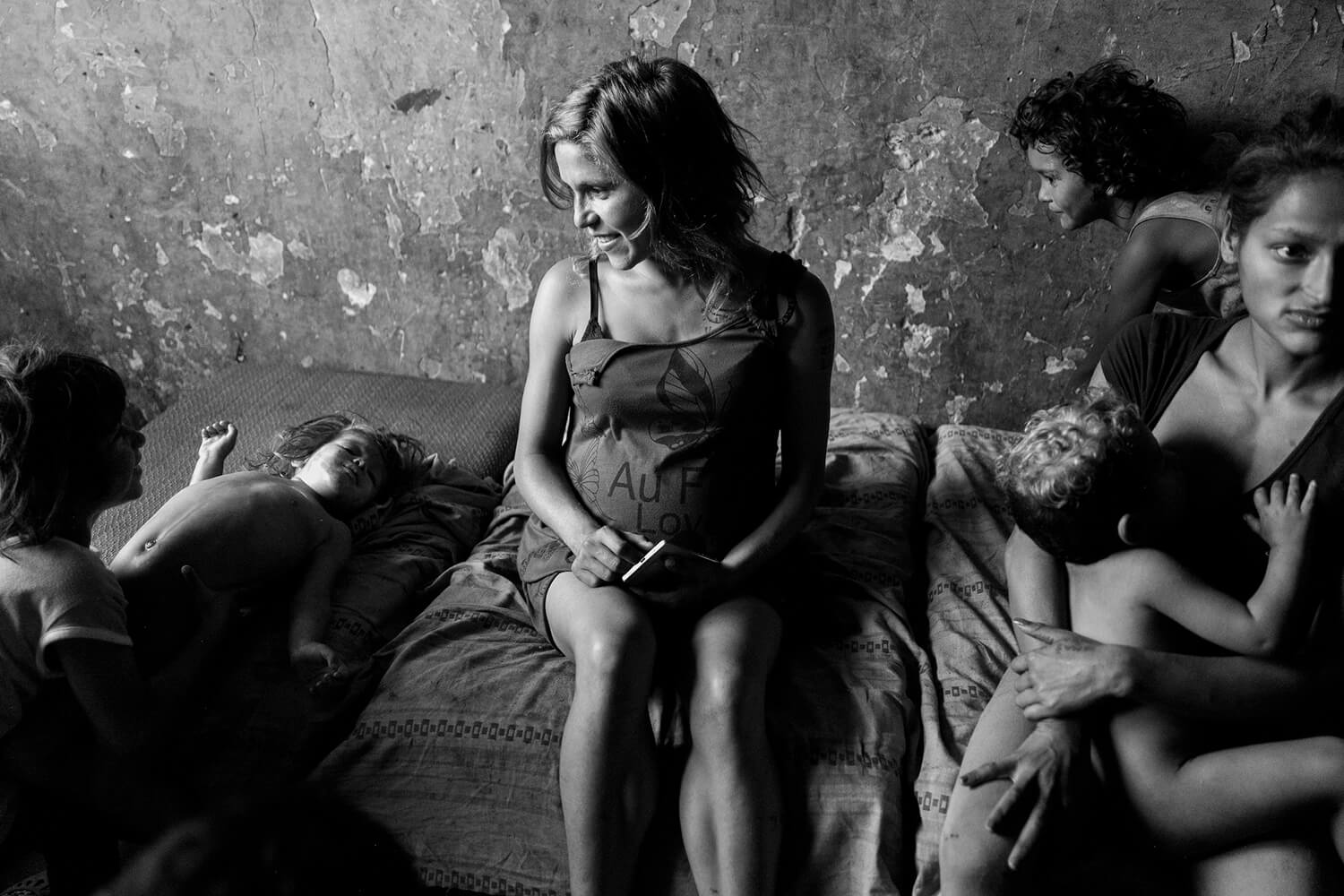“YOUTHHOOD”
ANNOUNCING THE WINNERS
“They don’t know it yet, but the infinity of childhood is brief.” – Michel Houellebecq
We’re delighted to present the results of our May competition judged by conceptual fine art photographer Holly Andres.
There is perhaps no time more significant than youthhood, as the world expands around us and we explore our place in it. The most lasting of relationships are formed, the strongest of emotions are felt, and the deepest of memories are etched. And those memories are often the most vivid, fully dimensional and sensorial that we carry we us. This formative period therefore makes for a compelling photographic subject – the best depictions of youthhood offering something universal.
Across these stunning images from twenty talented photographers we see many aspects of youthhood – play, exploration, creativity, expression. Finding first love, learning a trade. But also a darker side. Youthhood in the face of war, bullying, environmental degradation… They are a reminder of the resilience of the young, and the universality of our experience, but also the precious need to create a world in which the next generations can thrive. Youthhood can feel infinite – here’s just a glimpse of it.
Congratulations to the selected photographers, and thank you to everyone who submitted. You can join the discussion on Facebook and Instagram.
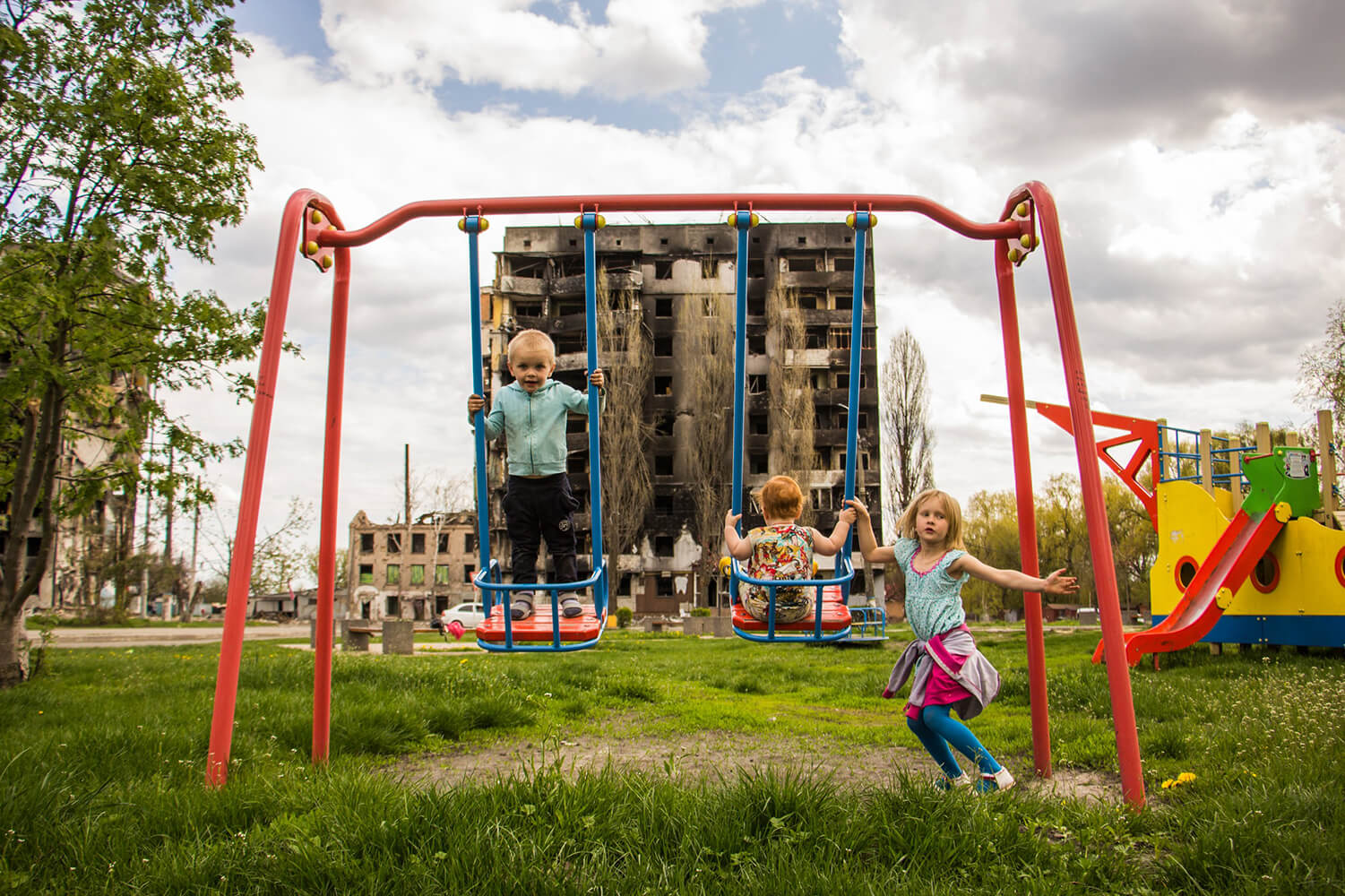
“The lively narrative of Ukrainian children playing on a colorful swing-set – in the midst of springtime grass and cotton candy clouds while backdropped by a bombed-out housing complex – is such a powerful and captivating photograph. By layering these two disparate elements within a single frame the viewer is forced to contend with the dissonance and conflicting emotions it conjures: joy/fear, growth/destruction, hope/despair, life/death. This image is particularly poignant and ominous given the on-going uncertainty and ever-increasing terror of the Russian invasion.” – HOLLY ANDRES
Photographer statement – This series is made in Borodyanka, Ukraine. The kids are playing on a playground in front of a destroyed house. Only a few weeks after the russian occupiers were expelled. The contrast of destruction and joy reflects the color scheme. Nobody knows how the future will be like for the children. The interpretation of the photos are freely selectable for the viewer.
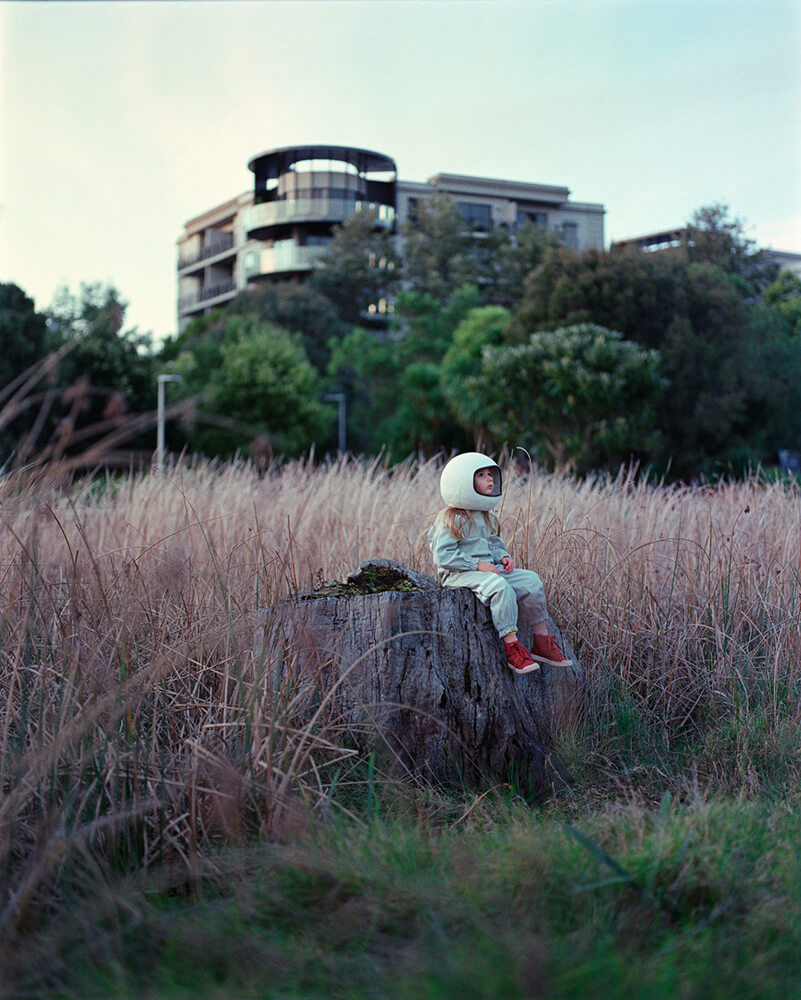
“This photograph, one of several in a series that chronicles imaginative scenarios of a 4-yr old rocket girl in a ghostly, post-apocalyptic world, reminds us of the enduring qualities of creativity and wonder in the face of uncertainty and fear. Not only does this image invite us into the rocket girl’s fictitious world, we also acknowledge the artifice and photographic process of this father/daughter collaboration and how the two of them cultivated curiosity, purpose, and ultimately a meaningful body of work while staving off lockdown malaise.” – HOLLY ANDRES
Photographer statement – From the series The Rocketgirl Chronicles. As the world’s most locked down city struggled through over 240 days of heavy restrictions, with limited time outside and scarce options to learn and play for the kids – everyone needed to find their own way to keep going. Small things. Small wins. Like making a space helmet for your child fascinated by the night sky. And a suit. Too bad that the novelty of a costume doesn’t last. Stories however, seem to have worked since forever. So we took the costume and went looking for stories. The good thing is that with a little imagination stories can be found anywhere, be it 5km travel limit or your bedroom. The phone booth or a laundry. These analogue photographs are the memories from the stories we found. The lockdown has now ended. We’ll outgrow the costume. But the time spent together exploring and imagining is one special gift to keep.
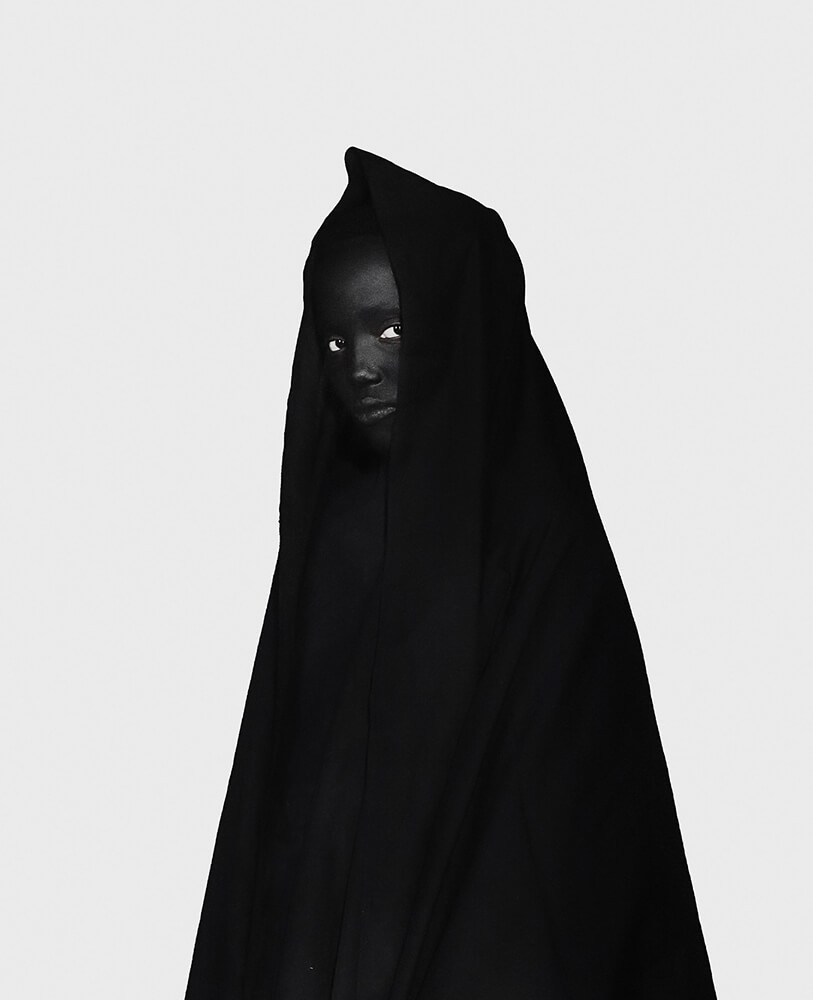
“The perfect black of the cloak cutting a distinct wedge through the frame, only the whites of this young boy’s eyes and the soft contours of his face visible in the absolute darkness. It’s aesthetically bold as a standalone visual, but when viewed with Bongani’s statement – describing a form of racism in South Africa so prevalent there’s a word closely associated with it – the chiaroscuro and his subject’s despondent expression and his tentative stance take on an extra meaning. It’s a striking image marrying art with a message.” – LIFE FRAMER
Photographer statement – Montsho meaning Black is a famously used word in South Africa to make fun of a dark person as a result of their skin tone. This photograph explores emotional effects of childhood teasing which causes young black boys and girls end up being depressed and forces them to have low self-esteem. Montsho opens conversations around the representation of the black body and black lives as a subject matter and challenges the idea that Blackness is homogenous. For me this photograph is both about destruction and preservation, it’s about what we choose to embrace after going through trauma.
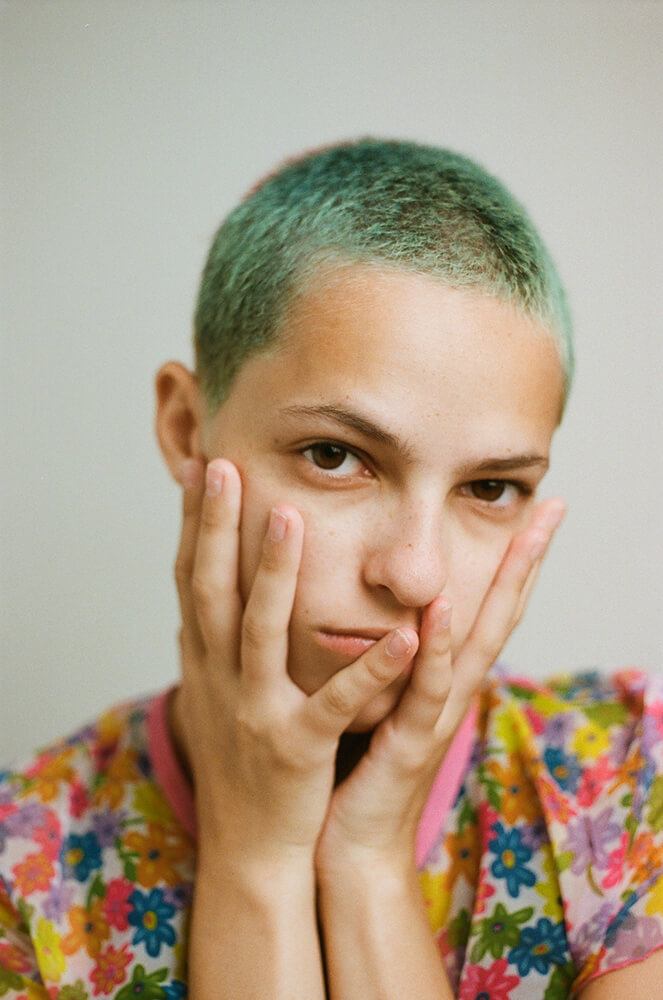
“Youthhood is a period of self-discovery – finding the passions and values that shape you, and in doing so railing – in ways big or small – against social norms and the boundaries set by others. It can at times feel like a balancing act between what you want to be and how you’re perceived, and it feels like some of those ideas are captured in this beautiful soft-focus portrait by Rona and Ofek – one where her subject’s desire to express themselves, and their coyness in being observed, act in a captivating tension.” – LIFE FRAMER
Photographer statement – Lian, from a series celebrating authentic self expression among adolescents.
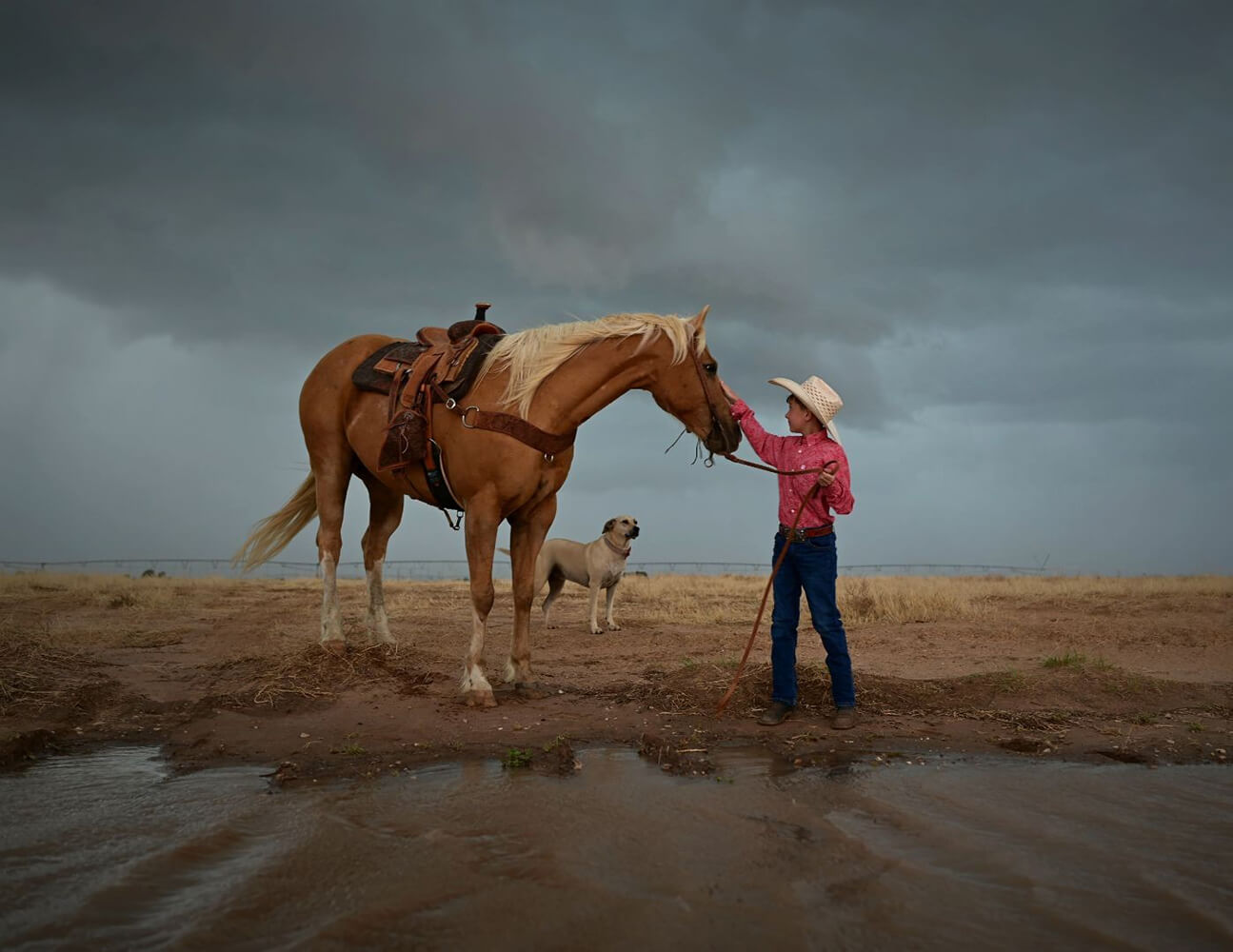
“Shot against a menacing sky reflected in the foreground water, and with a perfectly framed boy, dog and horse, Tonya’s image is a beautiful scene that tells a story of growing up – of a young boy learning his trade. The command he has over this horse that still towers over him, speaks to the bond powerful bonds that can be nurtured – here between adults and children, and children and animals. Very well done.” – LIFE FRAMER
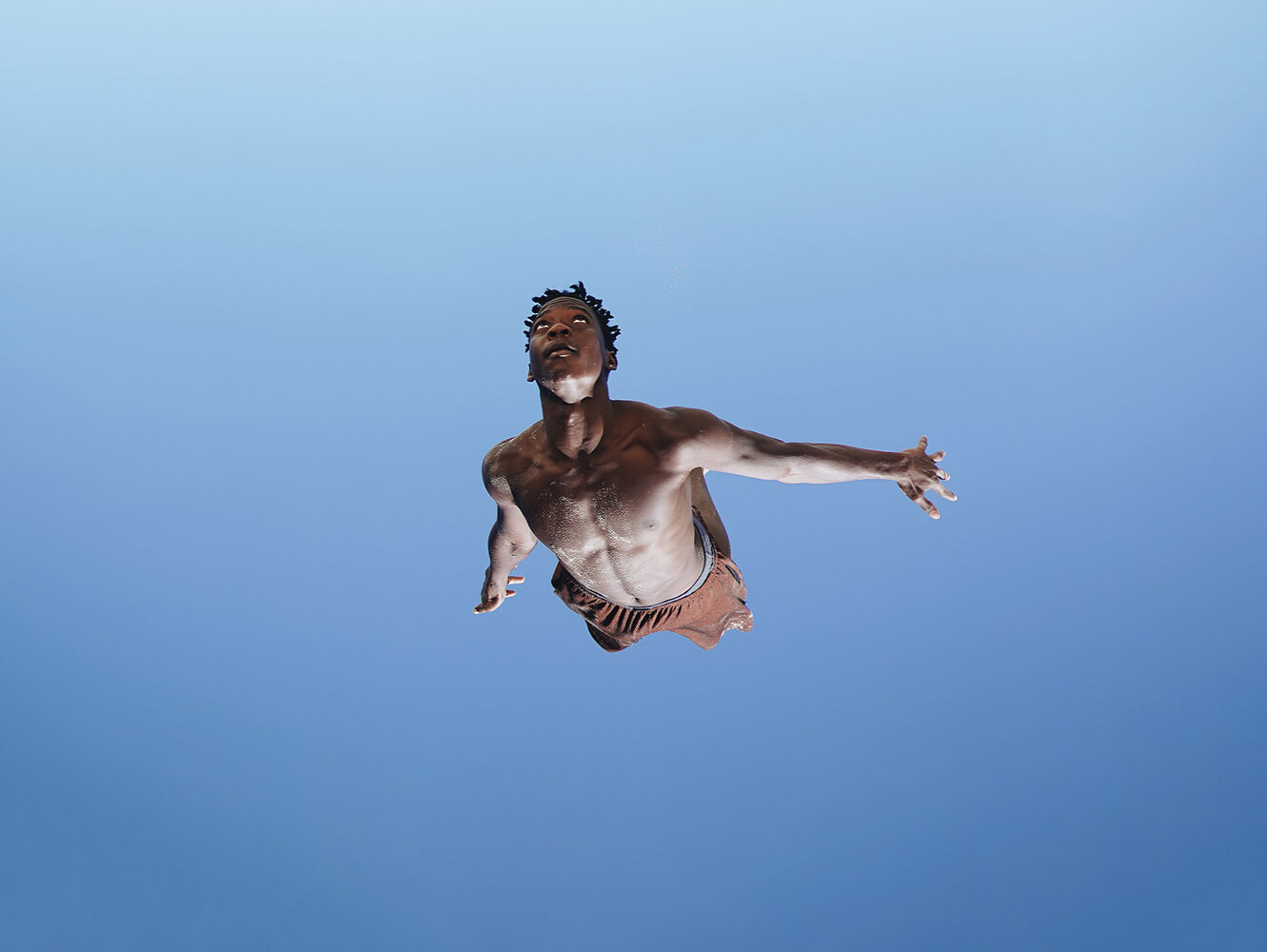
“Images of young people jumping – often off rocks into the sea – can feel a little trite, but it’s no surprise they’re so commonly taken. There’s something about this act, the sense of fun and freedom it conveys, that powerfully captures the nature of youthhood. “The will to discover the edges of courage” as Ernesto eloquently puts it. He captures those ideas in this shot, but also avoids cliché through clever framing. Capturing this athletic youth against a pristine blue sky we feel a sense of absolute liberation and uninhibitedness, a giddy joy in losing one’s sense of direction and of being able to fly, if only for a moment.” – LIFE FRAMER
Photographer statement – Icarus. The Greek myth tells the story of a young Icarus who soared into the sky flying too close to the sun despite his father’s warning. This image is part of a portrait series named in Icarus’ honour representing the fearless, free and reckless nature of youth. The will to discover the edges of courage. These group of young boys looked so mighty and fragile while their bodies momentarily flew in the air. A contrast that resonates so strong with the experience of youth – or at least mine.
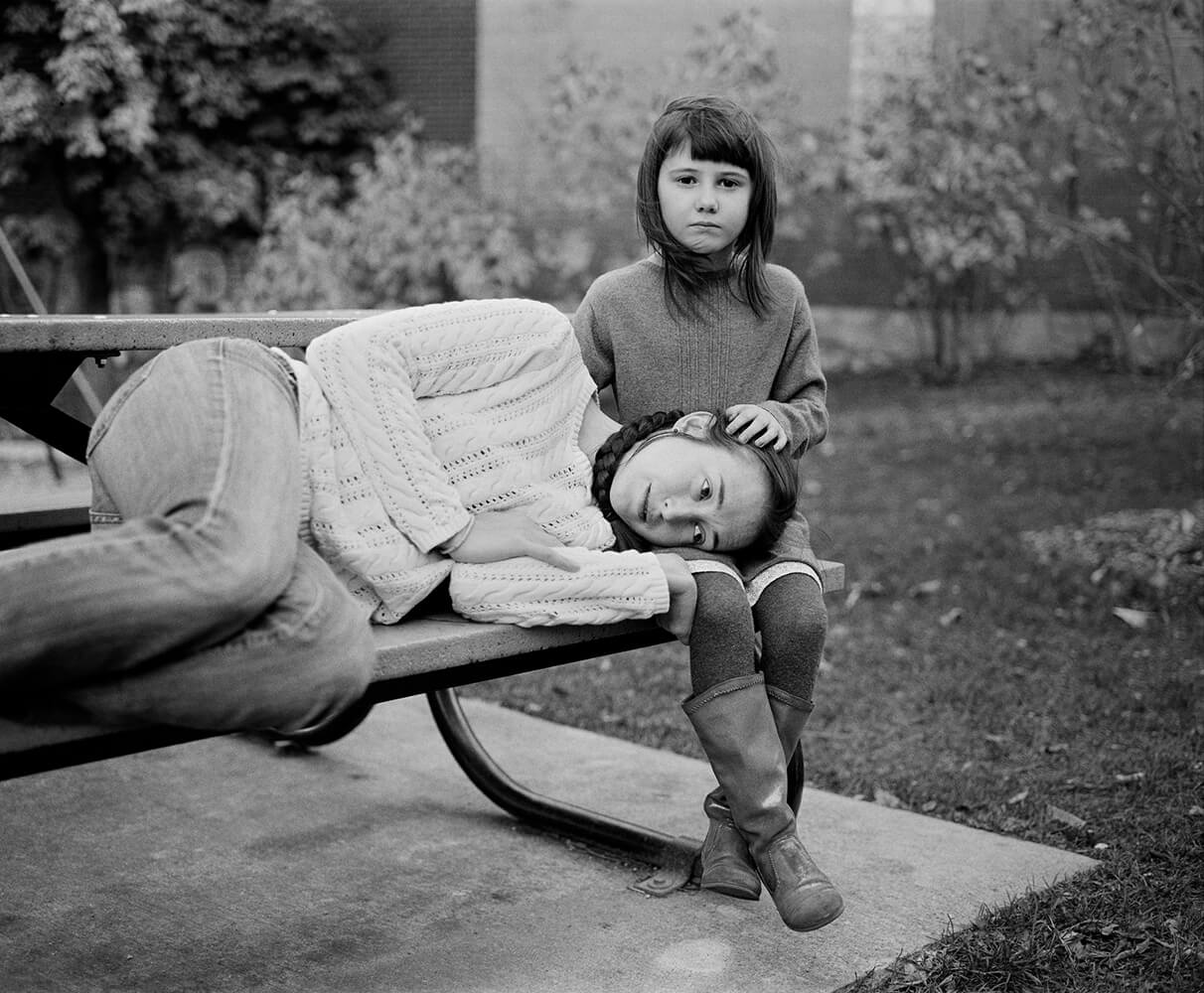
In this delicate portrait, Eric questions the nurturing relationship between parent and child, and how that balance – of carer and cared for – can sometime be askew. Shot in somber black and white, we’re first drawn to the woman and her vacant stare, followed by her daughter – engaging in eye contact with a knowingness that defies her years. Relationships should always be symbiotic, but here – as Eric describes in his personal and thoughtful statement – we can feel the weight on a young person having to grow up too fast. A beautiful, conceptual image inspired by difficult personal experience, Eric channels his memories into something constructive and provocative
Photographer statement – From the series It Takes a Village. This series is about an aspect of youthhood, or more, a certain loss of youthhood that some experience – a personal work motivated by the memory of my mother’s depression during my early years. From the age of seven I have memories of her locking herself up in her room for days at a time, and her threats of suicide. From what I have come to understand, her own mother had similar bouts of despair. At the time, I took on a supportive role thinking it would help my mother get better. This led to an unhealthy blurring of boundaries.
The series of images aims to seduce the viewer with the child’s openness, then, on a darker note, hint at an absence or distraction in the adult, prompting the viewer to wonder about different types of the parent/child dynamic. It is important to me to speak of and question the cycles of habitual inheritance. What is handed down and adopted without question. Can a bad cycle be broken?
Shooting this series has had a cathartic effect on me. In the process of asking people to pose and act out gestures, the theme is revealed. Many then share similar experiences of a parents absence of some form or another in their childhood. Their sensitivity to the subject has shown how conscious they are of not wanting to repeat past mistakes in their own parenting. It is a hard job – It takes a village to raise a child. In the age of the small nuclear family, the single parent family, and the high value we place on independence, parents don’t get the support they need in bringing up their children. The traditional support group (the extended family) is smaller, spread out or often simply has other interests.
Not everyone is a parent, but everyone is a child of one. Is the role we played one that we have chosen for ourselves? Does it still serve us? These roles are often given to us unconsciously in our vulnerable youth to fulfill some need in the family dynamic. With these images, I hope to open a dialogue questioning our familial role, and ask how that role translates to the present and our current relationships.
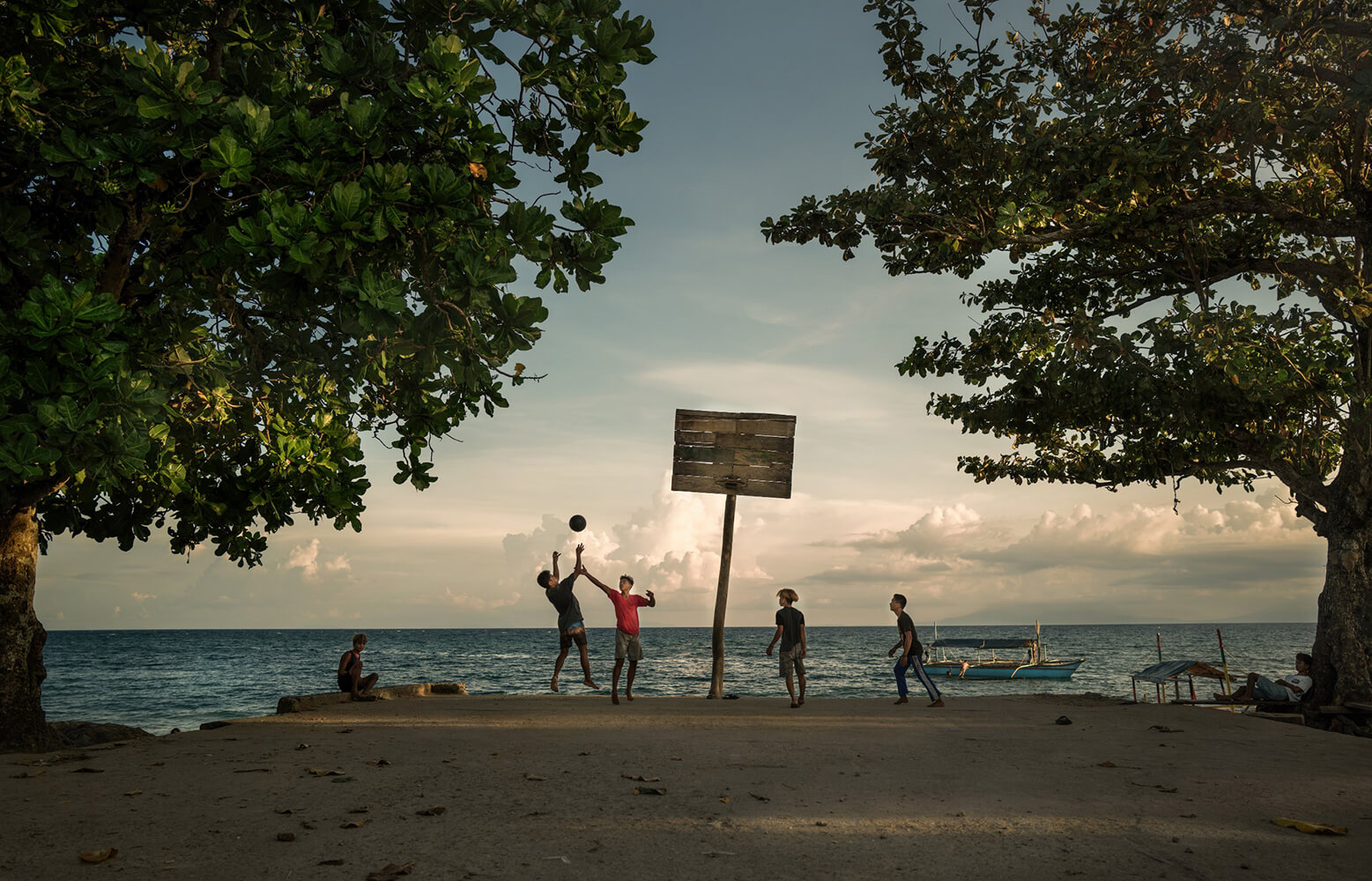
“Framed by the surrounding trees and lit by a low golden sun, Valdimir captures this charming scene seemingly at the edge of the world – the court abutting onto an endless flat ocean. The rough dirt ground and wonky, makeshift basketball hoop tells us that this is not a life of material wealth, but it is one filled with amusement, friendship and relaxation. And what’s more important for our formative experiences? Lost in play, it points to our similarities as humans all over the world.” – LIFE FRAMER
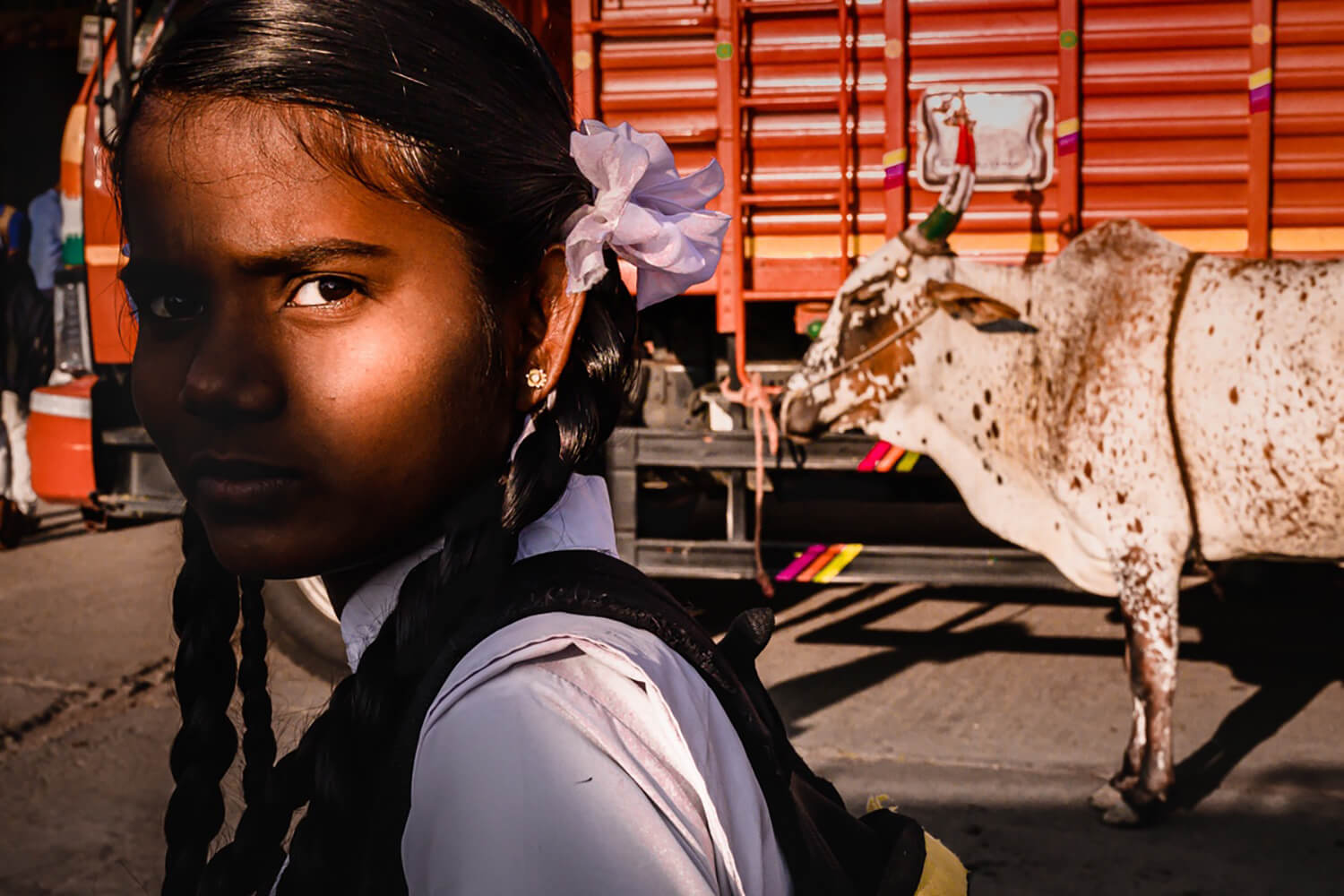
“A wonderful slice of life, Anna freezes a brief moment of connection with this young girl as she passes by, perhaps on her way to school. She is as interested in the photographer as we are in her – an active participant in the creation. The image captures something of the dynamic energy and vivid colors we associate with the streets of India, and like the best candid street photography simplifies the complex, chaotic messiness of life into a sense of beauty and order.” – LIFE FRAMER
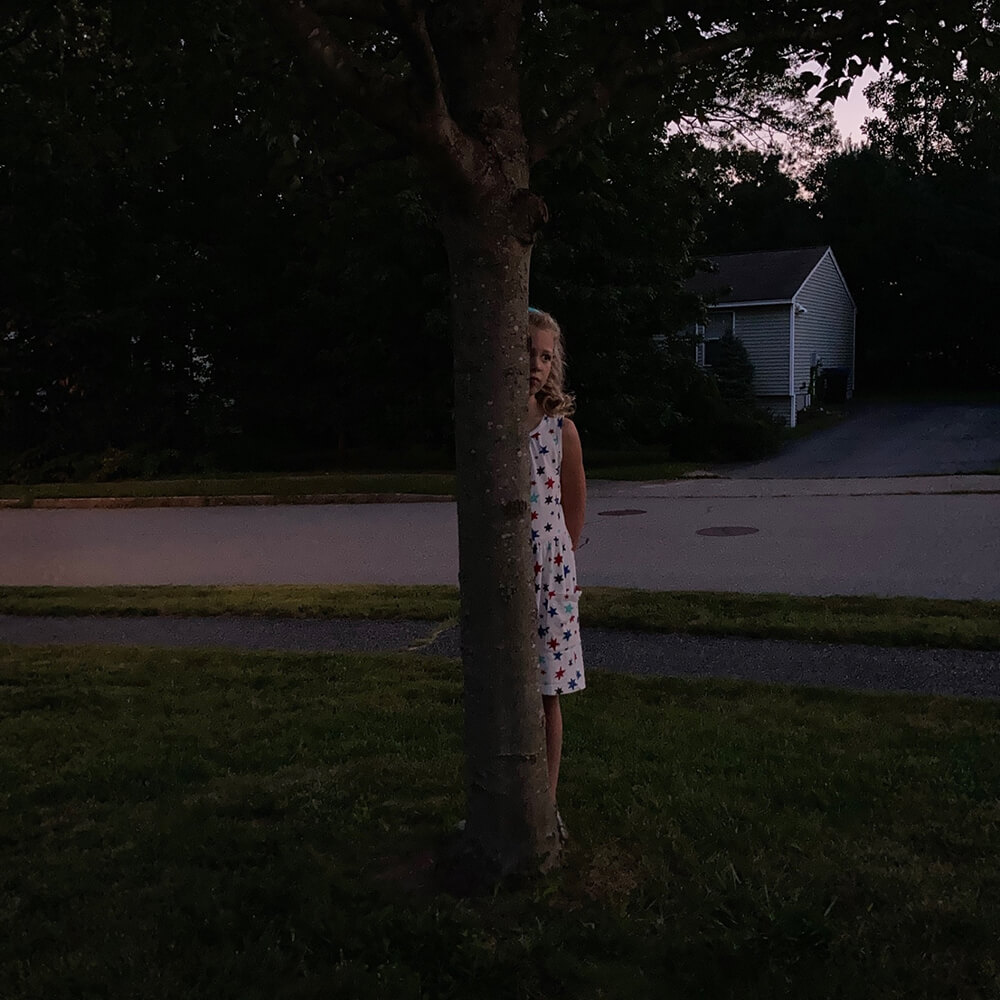
“At dusk the world can take on a certain uncanniness, and no more so than in sparse, pristine suburbia – it in itself associated with the inbetween, not one thing or another. This simple moment of hide and seek, with Britt’s daughter tucked behind a tree, here becomes something more – a metaphor for the ephemerality of youth perhaps, just as dusk itself occupies that ephemeral time between night and day. A wonderful portrait full of atmosphere and quiet magic.” – LIFE FRAMER
Photographer statement – From the series Already / Not Yet. Exploring the transformative qualities of dusk as a psychological, emotional, and spiritual metaphor. My daughter was playing hide and seek, and this image of her strikes me as both haunting and magical.
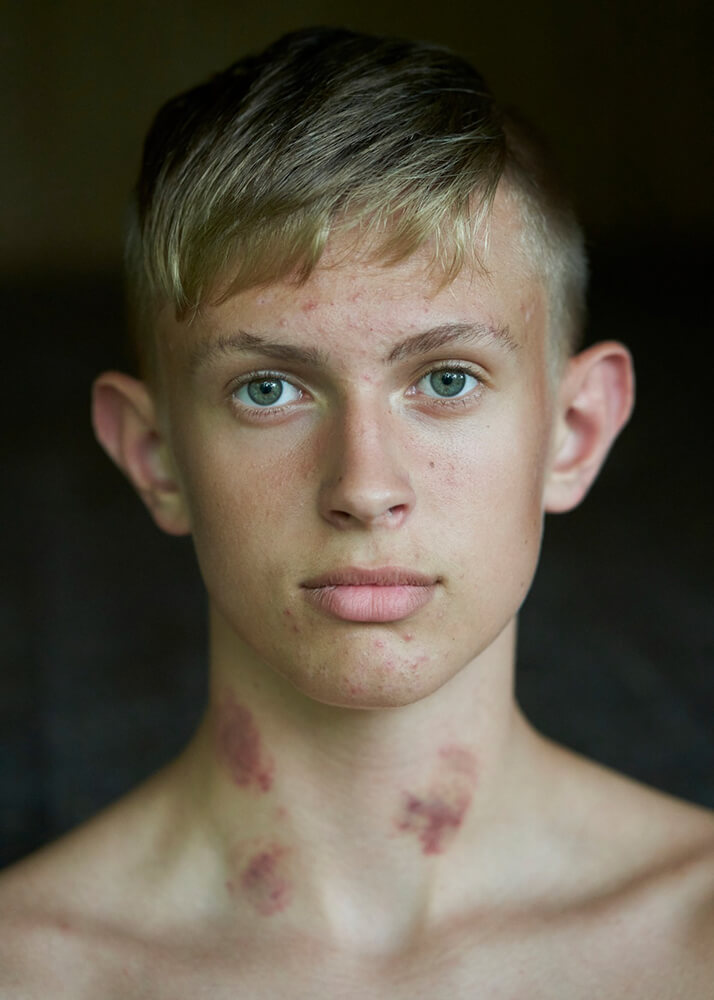
“Framing his subject tightly and with a shallow depth of field, Mads creates an intense connection between subject and viewer. It is the eyes that usually tell us the most, but in this case it’s the neck – this young man wearing these hickeys like a necklace. Raw bruising symbolic of hot-blooded passion, they represent love and pain equally – emotions perhaps felt no more keenly than at this age. An honest portryal of a youth growing up.” – LIFE FRAMER
Photographer statement – From the series Fjordvang. Danish Boarding Schools are heavily inspired by the values of Danish theologian and philosopher, N.F.S Grundtvig. He believed in the importance of educating and including the working class in order to help people become active members of society. The aim was to excite the students about life before he could excite them about information.
But this also gave his boarding schools a reputation for schooling troublesome teenagers – either mischievous children to get disciplined, or whose parents were tired of them. Throughout the years, diversity has flourished in the mentality of the schools. Boarding schools have become popular amongst various social classes and are now considered a privilege that many wish to attend.
In fact, it has never been more popular to attend boarding schools in Denmark. In the year of 2019, there were 30.069 students enrolled in 240 boarding schools. I went to Fjordvang Efterskole on the first day of the school year, to see how the new batch of students would welcome the life of a boarding school stay. A stay that enables teenagers to engage with each other, as the school becomes a world of their own.
Image: According to the principal, the first couples are always noticeable after the first week of the school year. This is Benjamin after the first weekend.
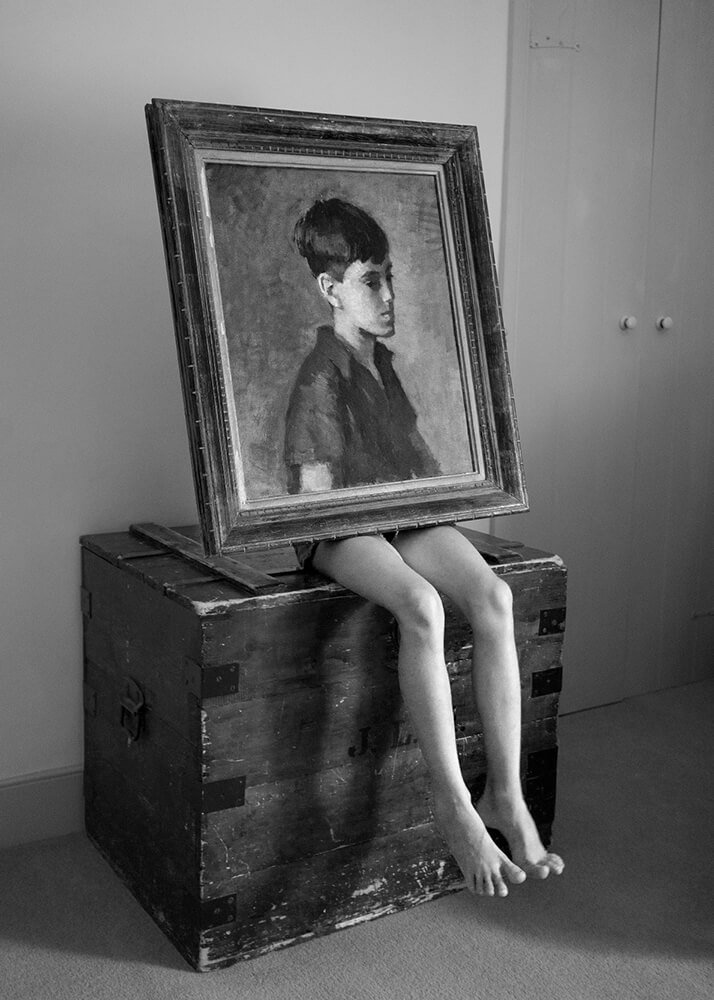
“Taken with his daughter while in quarantine at home during the Covid-19 pandemic, Alex’s playful and creative image captures both the restriction and ennui of the lockdown, and the enterprising ways in which we kept ourselves occupied. He describes photography in these circumstances as an “escape valve”, which is a lovely way of describing how it can be used to comment on the moment, while taking ourselves out of it. That the subject of the painting is his daughter’s great-grandfather’s father provides an extra dimension of family and legacy – things that came into sharper relief for many of us during this time. A wonderful collaboration from a period that will be seen as a formative for many young people.” – LIFE FRAMER
Photographer statement – From the series Not About Lockdown. The image shows my daughter Adele sitting on an old chest and hiding behind a portrait of her great-grandfather’s father, taken during a confinement in the UK in 2020. During a 14-day quarantine at my in-laws’ home, photography became a therapy and an escape valve, the mirror where I could express my fears in the context of this global crisis without forgetting the privilege of being able to romanticize the effects of the pandemic. But it was also a way of spending time trying to bring a certain normality to a reality as dystopian as it was disconcerting, a game where I involved the whole family.
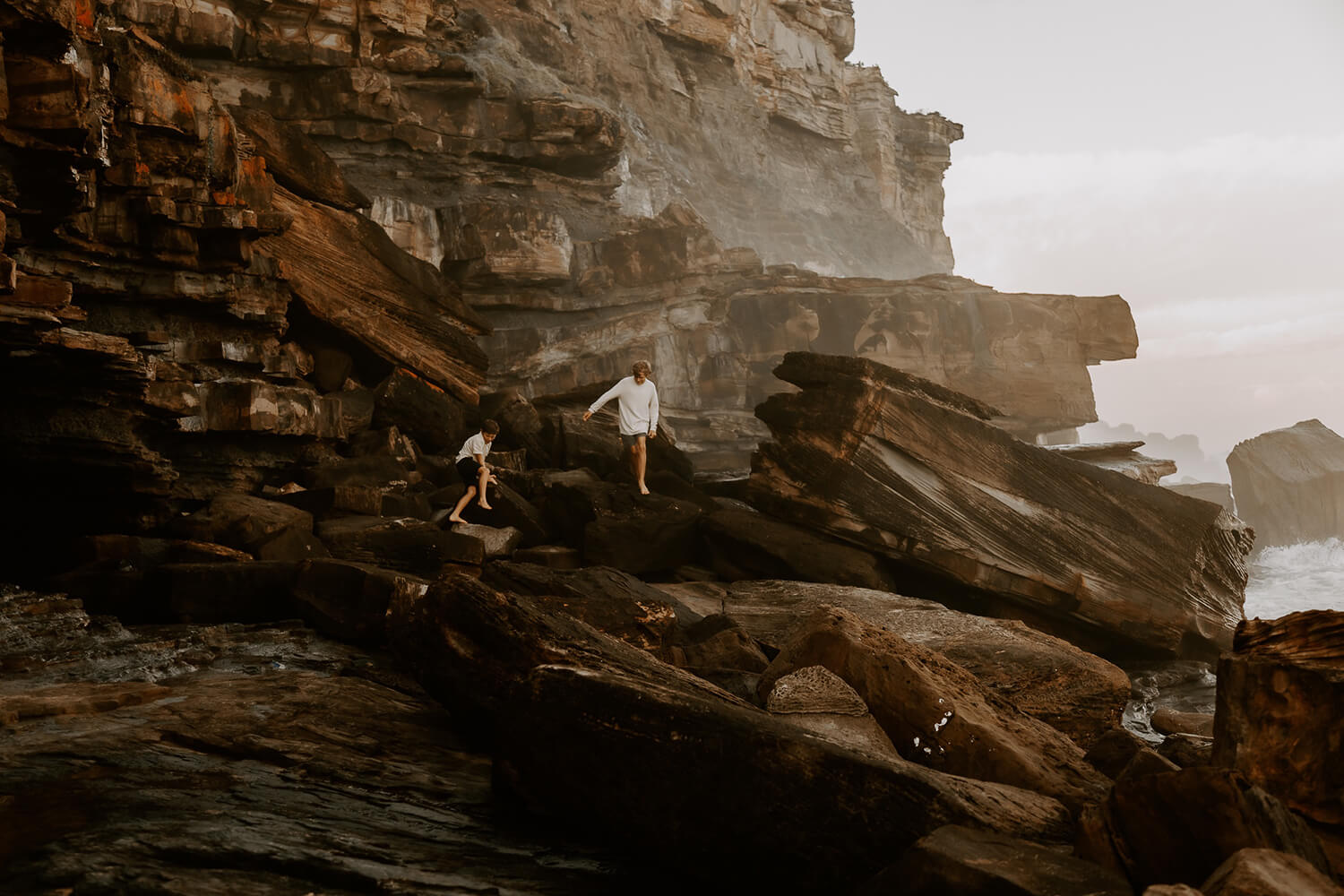
“The jagged, monolithic rocks and the dark color palette with which Susan captures these boys scrambling across them might give this image a foreboding feeling, but there’s also a sense of adventure – of the boundary-pushing activities that help create a sense of self throughout youthhood. It’s a dramatic scene that captures the wonderment Susan describes in her statement, as well as the bonds of friendship that are formed through such experiences embarked on together.” – LIFE FRAMER
Photographer statement – My work can be seen as separate images or as a series based on childhood experiences across the years through the lens of the five sensors. Growing up in Australia on the coast much of my childhood memories are centred around the sensations of tightened, salty, sun kissed skin, smells of seagrasses mixed with suncream and the joyous laughs filling the air against the waves pounding the sand. With freedom to explore barefoot, climb rocks and stay out until the sun slipped below the horizon, moving in and out of parental eyesight, created a sense of wonderment, fulfilment, confidence and a belly full of adventures that have grounded me all through my adult life.
I feel there is a desperate need to simplify childhood. To root their bare feet back to nature fuelling all their senses, sparking joy and imaginations, building whole hearted humans.
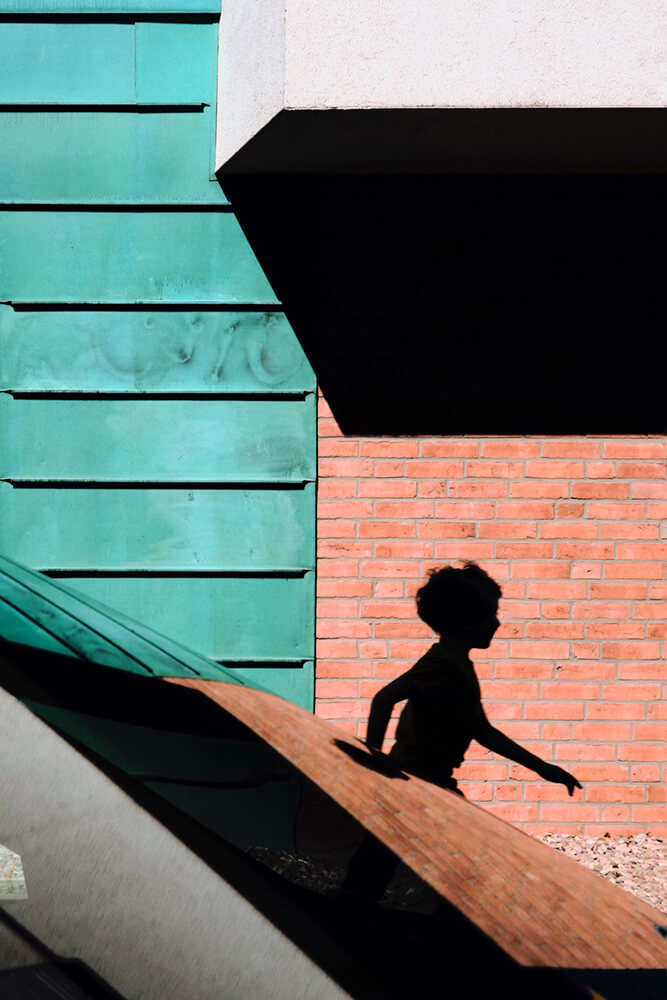
“Guido captures the urban realm with a satisfying balance of geometries, reflections and textures, shadow and complimentary colors. And with a silhouetted child racing through the frame, giving a sense of motion and life, the scene is imbued with a sense of fun and play, of exploration and discovery. It’s a child-like way of seeing our urban spaces, which we’d all benefit from channelling more.” – LIFE FRAMER
Photographer statement – I am almost blind since birth on the left and have 25% vision on the right because the optic nerves don’t pass on as much information to the brain. You can imagine it like an internet video with a low data rate. If there is only one person on the video, I can see some details. In a crowd, the faces are so unclear that I can hardly recognize friends. Through photography I go to and beyond the limits of my vision.
I see my city as an urban landscape. A landscape made up of shapes, colors, reflections and light. My street photography is characterized by a clear visual language, everything superfluous is left out. The overarching theme is the tension between urban architecture and its inhabitants.
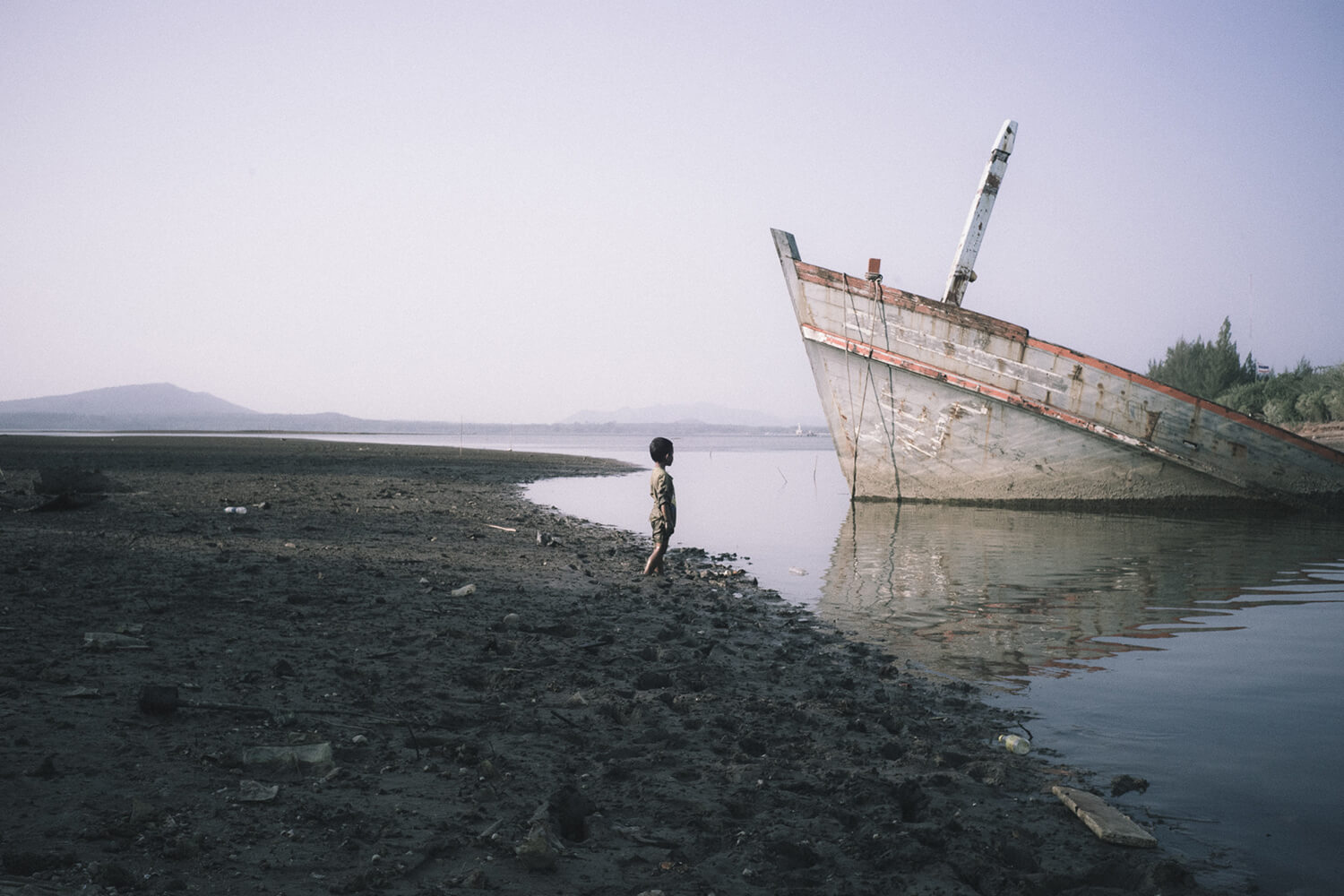
“Despite its gorgeous, hazy aesthetic, it’s difficult to view this image as anything but a sad allegory of our time – an abandoned, half-sunk ship and a litter strewn beach representing the state in which we’re leaving our planet for the young. It’s a powerful shot.” – LIFE FRAMER
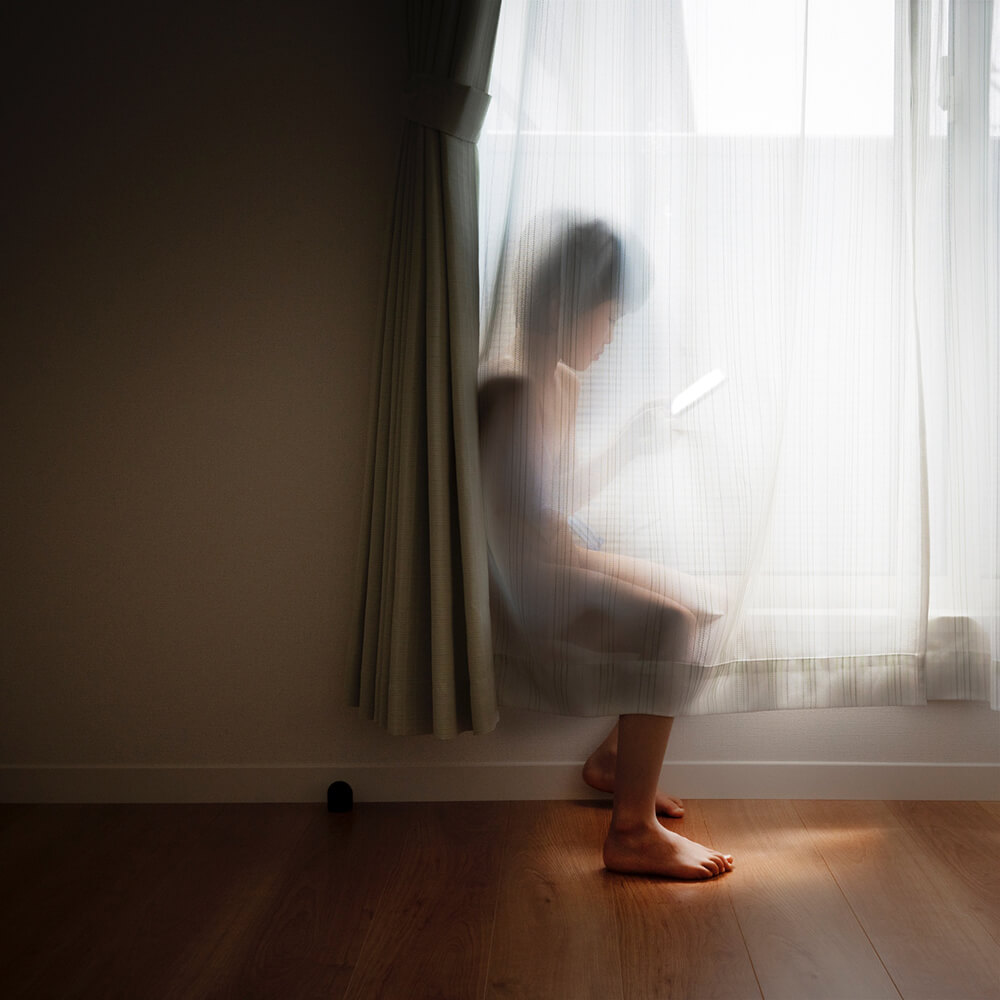
“The allure of technology for young people, and the access they should or shouldn’t have to it, is a subject many parents and guardians will think about deeply. More often than not it’s depicted in contemporary photography as something damaging, but Takako’s stance seems more measured, more gentle. Here we see her son, draped in a translucent curtain and bathed in soft light – absorbed in his own little world. Against stark, empty surroundings, this small square of light is a portal to elsewhere – to new experiences and amusements – an alternative world to the one beyond the window, to which his access may also be restricted. A window within a window. And yet his vulnerability is also so apparent. Such ideas of escapism, of supervising childrens’ explorations into our complex world, are central to parenting and notions of youthhood today. A beautiful, thoughtful image.” – LIFE FRAMER
Photographer statement – From the series Skinship. Skinship is a Japanese word that describes the skin-to-skin, heart-to-heart relationship between a mother and a child or family. Skinship includes cuddling, breastfeeding, co-bathing or co-sleeping which build intimacy. Through an experience of loving touch, a child learns caring for others. Japanese skinship is considered to be important for strengthening the bond of family and also for the child’s healthy development.
Because the idea of skinship was perfectly natural to me as Japanese, only after I was arrested in New York because of family snapshots of skinship, did I realize how unique and shocking it could be in other cultural contexts. Living in both Japan and America showed me a cultural comparison and paradox clearly.
In Japan, I gave birth to my son in 2012 and started making self-portraits, somehow, in the chaos of everyday life flying by. There seemed no boundary between our bodies, a symbiotic union. Photographing my son growing up and enjoying skinship also enabled healing my old wound.
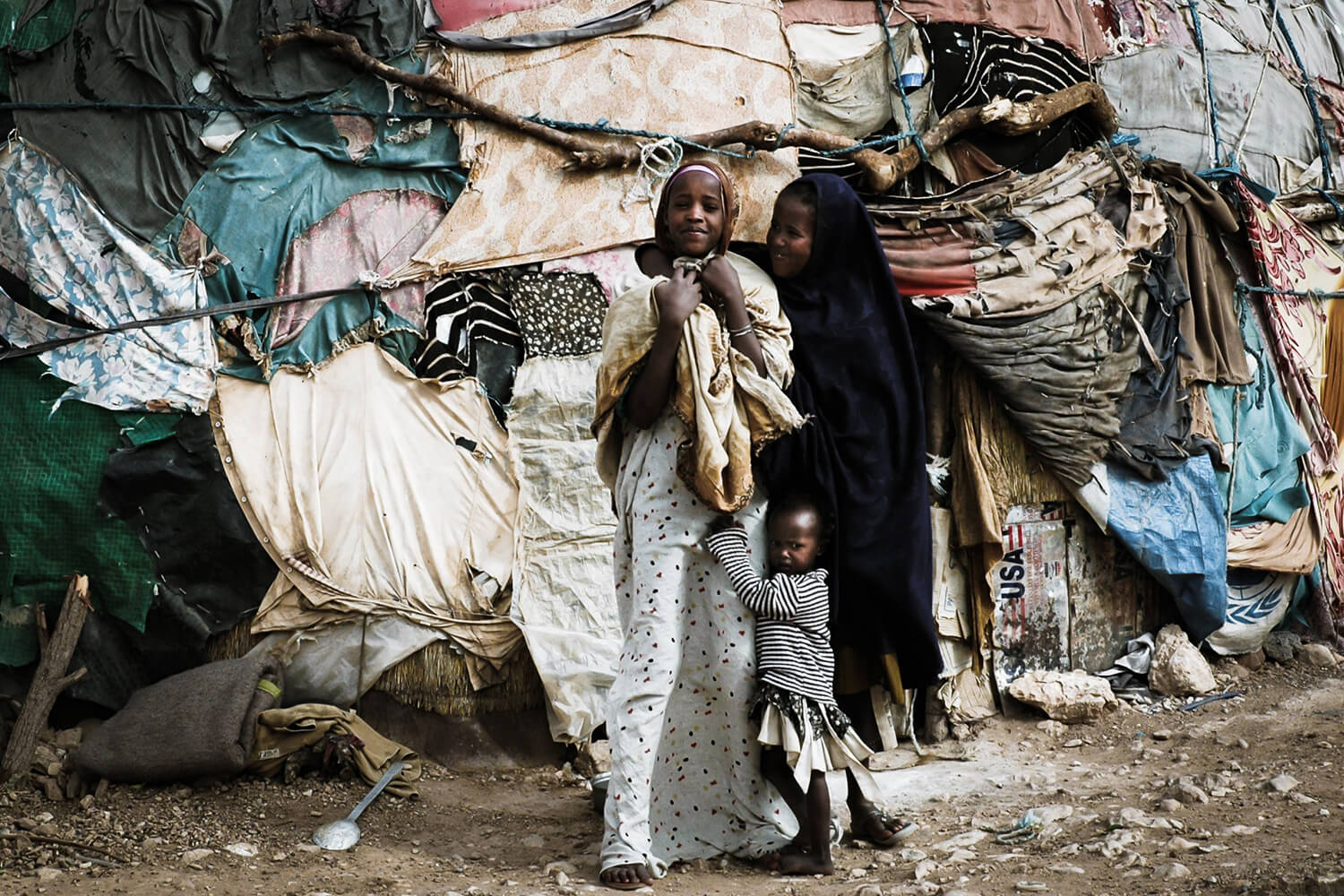
“There is little to say beyond Giulio’s poetic statement – capturing the essence of an image which, while perhaps not aesthetically remarkable, captures a powerful and enduring bond between sisters of different generations, who almost blend into their modest surroundings. Life here cannot be easy, but the safety and strength of family can overcome almost anything.” – LIFE FRAMER
Photographer statement – I shot this image inside an Internally Displaced People camp in Hargeisa, the capital of Somaliland. It shows a different youthhood, a certainly materially poor one, but also an amazingly wealthy one when it comes to the human soul and feelings. Pure, unconditioned love, sisterhood, and friendship, against all external odds, are, most of the time, experienced during youthhood, when even the brutality of the world around conspires against life and hope. These three sisters, their smiles, hugs, and closeness talk in a different language: that of their pure young age.
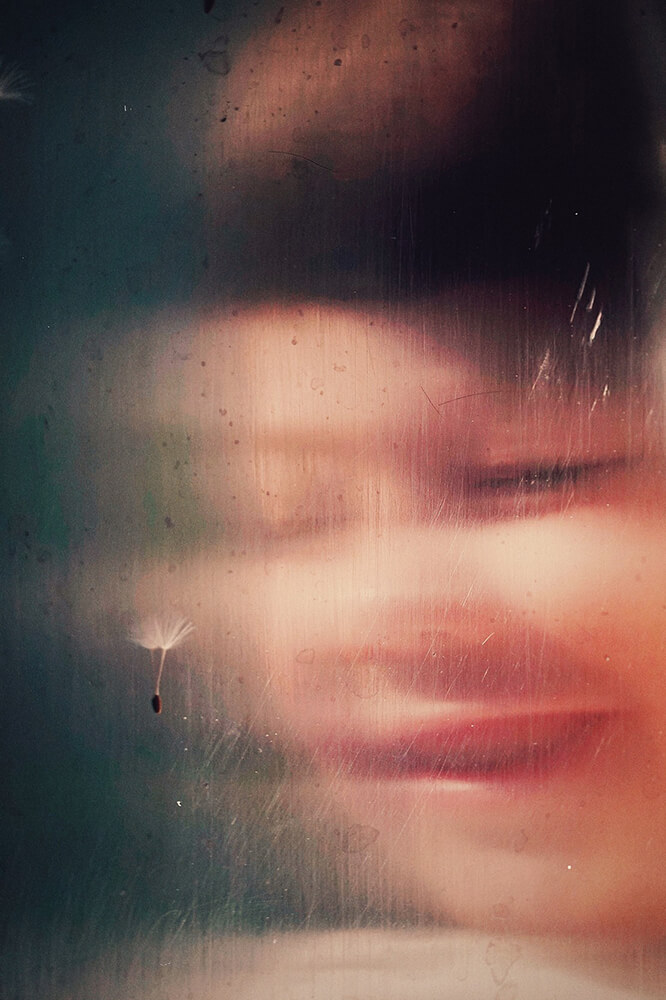
“In Taras’ somewhat abstract image we see the reflection of a child smiling in the bright sunlight and a dandelion seed caught in motion. It conjures many ideas of a halcyon, bucolic childhood spent in nature, and yet here there’s something off – the memories fractured by scratches and imperfections. A barrier in the way. Reading his statement, and the inspiration for this work being the forced emigration of Ukrainian children, imbues the image with potential meaning – of a youthhood stolen? We’d love to hear more from him about it.” – LIFE FRAMER
Photographer statement – Childhood in forced emigration due to the war in Ukraine.
During the first month of the full-scale war, 3.6 million people left Ukraine. Another 6.5 million, according to the International Organization for Migration, have left their place of residence and moved within the country. In the first days to the border checkpoints to the EU countries with which Ukraine borders, first of all to Poland…
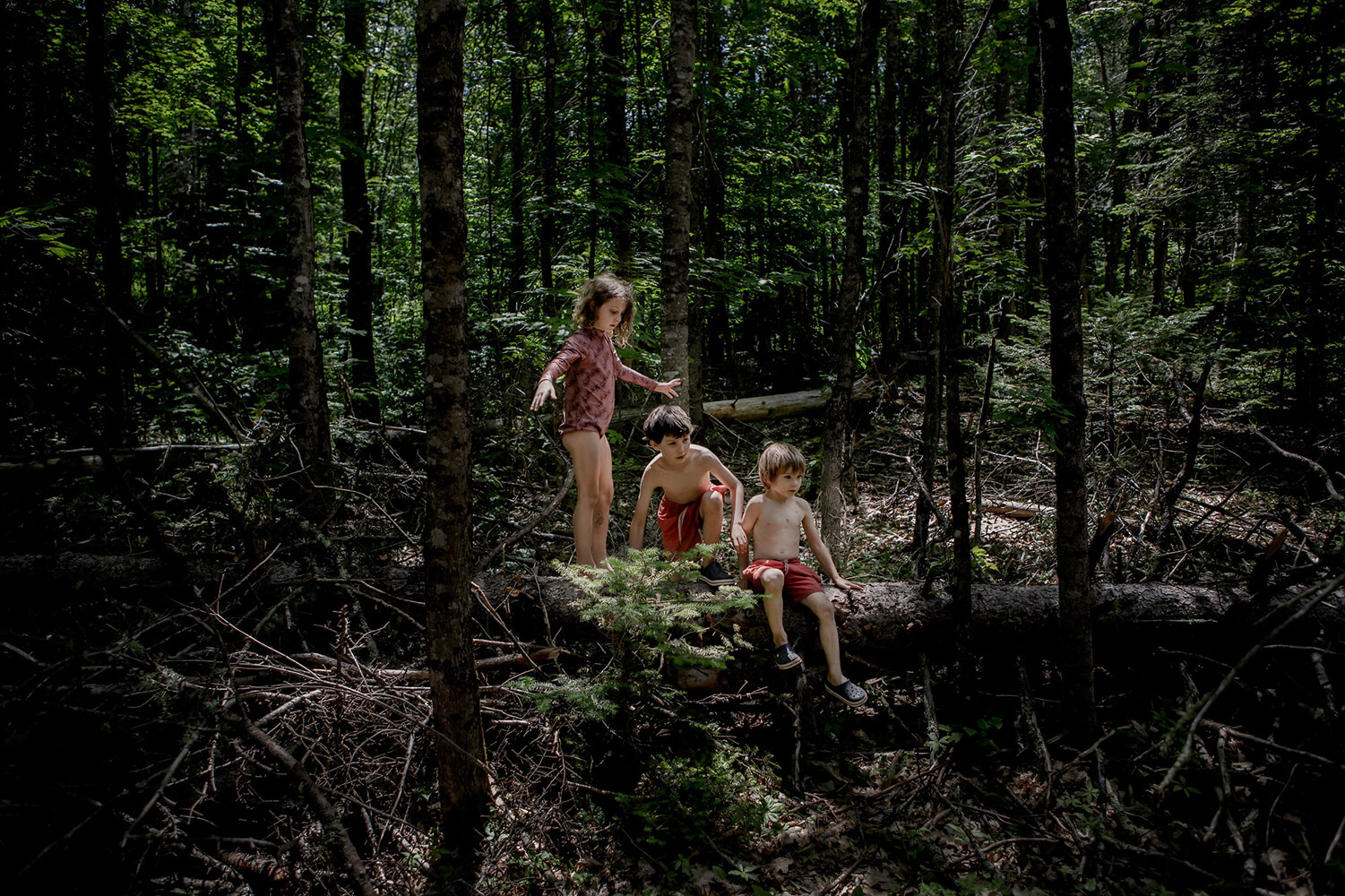
“With mottled lighting and the quiet tension in the expressions of her three subjects, struck by something out of frame, there’s a painterly quality to this image. Exploring this dense wooded scene together – crunching through the undergrowth and climbing over fallen trees – it speaks to the freedom to play, explore, get lost and learn, that such an environment affords.” – LIFE FRAMER
Photographer statement – From the series This Land. Influenced by the back to the land movement of the 1970s, my husband’s parents purchased 40 acres of rocky, forested land in rural Maine with the intention of turning it into a homestead in 1979. This image is part of an ongoing long term project about the family’s relationship to the land and its legacy.
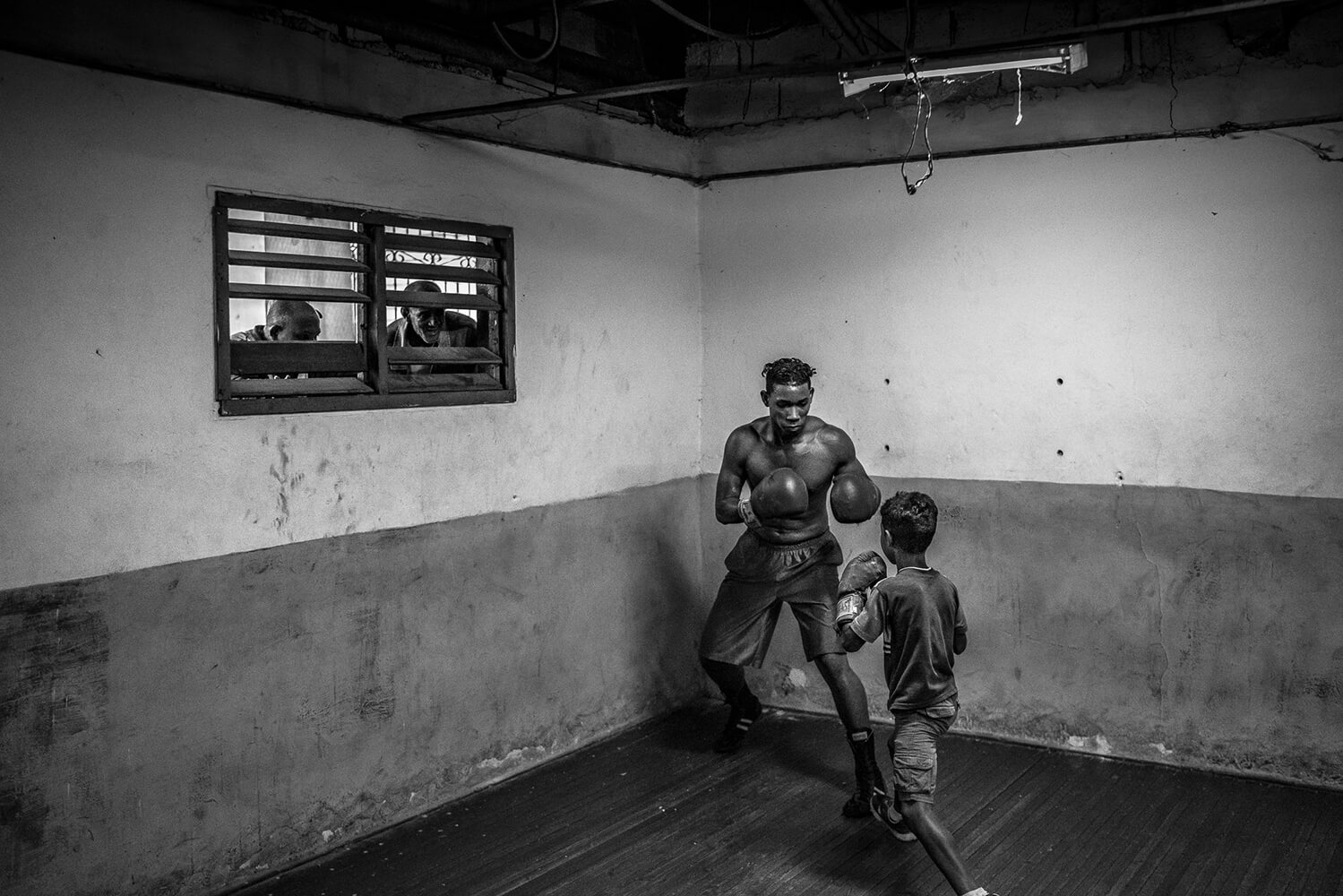
“In the sporting world, Cuba is synonymous with boxing – a rite of passage for many kids to train and work their way up into the ring. What’s striking about this image is both the mismatch of the sparring partners, one teenage and muscular, the other young and diminuitive, and the pressure cooker-like environment – us watching intently just like the men that peer in at the windows. Kelly’s statement tells us that this boy is considered a future boxing champion, and it brings to mind the opportunity, as well as the burden, in a place where champion boxers are superstars.” – LIFE FRAMER
Photographer statement – I stumbled across a boxing gym in Havana, Cuba and was puzzled to find this boy boxing with a man four times his size as others watched through a window. They explained he has shown a lot of talent and is a future boxing champion.
